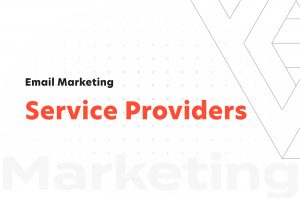Analytics tools make up over 80% of technologies used by digital marketers. This ranks analytics as one of the top three tools vital for creative marketing. What do you with data from analytics tools determines how creative your campaigns can be.
If your marketing strategy is a question of data or creativity, you’re asking the wrong question. You should ask how your data can work with marketing campaigns to elevate strategy. Read this guide to learn why your sales strategy needs creativity and analytics to succeed.
Generating and Implementing New Ideas
The scope of your creative marketing depends on several things. Your marketing and sales teams may have very different definitions of creativity. Innovation ranges from minor detail to big and bold developments.
The first step to generate new ideas involves asking the right questions. Start with a collaborative brainstorming session (or series of sessions). Have teams answer the following questions to evaluate their ideal scope for creativity:
- Does the data show when target markets shop and why (e.g., with or without incentives)?
- What benefits do customers receive that incentive further interaction?
- Do we define further interaction via subscriptions, online engagement, or social shares?
- Is customer interaction quality or quantity centred?
- How consistent is messaging along the buying journey?
Answering any one of these questions can reveal how aligned or differentiated your teams’ performance goals are. Most sales teams may prioritise the number of interactions over higher quality experiences. Marketing teams may do the same if their KPIs are revenue-based.
Aligning Metrics and Creative Marketing
In companies with less alignment, sales metrics may deter creativity in your marketing campaigns. If marketers feel pressured to meet revenue goals, they may miss key target markets. Personalisation is a key part of marketing outreach, which prioritises qualitative interactions.
An overemphasis on the number of dollars earned, spent, etc., moves away from quality metrics. Determining the alignment between your sales and marketing teams will better your idea generation. A better understanding of any potential divide makes creative goalsetting simpler.
Implementing new ideas for sales strategy can be simple or big and bold. You might only adjust the call to action colours. Or, you might create an entirely new ad format or placement campaign.
Developing a Detailed Content Strategy
With a strong focus on generating ideas through collaboration, strategizing is simpler. Implementing new ideas for marketing teams means building a solid content strategy. Sales analytics can help direct campaign performance goals.
Customer connection and engagement should direct your creative marketing. Analytics will show relevance to business interests and sales performance. Consistent messaging along the buyer journey elevates the customer experience.
Your content strategy should only focus on opt-in features. Requiring signup comes across as spammy, which deters consumer interaction. Whatever content offered, it should be industry-relevant and improve workflow.
Different strategies should slowly integrate data-driven content. There are several strategy types backed by big data you can explore. Some of the best ways to personalise content include the following:
- Contextual advertising: content placement through keyword matching and product alignment
- Retargeting: trackable pixels on the backend of your website to build retargeting audiences
- Dynamic creative optimisation: targets along the buyer journey with assorted testing
These personalisation strategies are only actionable with sales analysis. Marketers don’t perform at the end of the sales funnel unless a workflow includes them (e.g., follow up CTAs). Salespeople perform along the customer journey but are less active at the start.
For more successful prospecting and follow up, you need to interpret sales trends. Your marketing campaigns won’t get anywhere without accurate targeting. And marketers can’t target what they don’t have the data to understand.
Gathering Sales Analytics to Get Creative
The best marketers are over 70% more likely to invest in first-party data capture. First-party data qualifies as standard contact information salespeople use to nurture leads. Data capture can help your entire organization.
Assisting in the customer journey through machine learning tools like chatbots can offer valuable data. Predicting customer needs is easier with processes in place that capture basic interaction data. For example, if consumers follow a set query path for certain FAQs, teams can develop solutions.
Marketers and salespeople can invest in improving data capture to ease lead conversion. If an AI sorts through customers based on need, query, etc., you generate niches and target markets. When marketers understand consumer behaviour better, salespeople will, too.
Your sales teams should adjust their performance goals to better align with creative marketing strategy, too. Here are a few ways they can adjust KPIs to track quality interactions:
- Focus on strategy over annual budgets (i.e., quality over quantity)
- Analyze the decision journey for different client types
- Expand ROI sessions beyond marketing and sales meetings
These suggestions support a transition from a sales or marketing focus to an aligned one. Aligning goals allows your teams to play for ROI. When you ask how you’ll reach the anticipated ROI, generating and implementing ideas is easier.
You can act on these potential suggestions in a few ways. Consider aligning marketing analytics with financial goals at the start. Then, use predictive models to analyze market data (e.g., customer engagement from social media).
How Analytical Marketing Interacts With Sales
For creative marketing, analytics are vital. The most basic SEO strategy employs keywords. The following analytics on keyword frequencies can indicate value sales and marketing performance goals.
- Product design: desired features or solutions customers want
- Customer surveys: keyword frequency data can show competing interests
- Industry trends: change in keyword frequencies can predict consumer behaviour
- Customer support: determine where customers struggle most and how to resolve dilemmas
The more marketers understand customers, the better their advertising. Your salespeople can address issues and concerns through consistent messaging. And both teams can streamline the customer experience through a consistent approach to the buyer’s journey.
Beginning with keyword research allows for successful analytical marketing. The above examples all rely on a strong understanding of keyword frequency. But keywords are only part of the relationship between marketing and sales.
Your marketers likely rely on organic traffic in addition to paid advertisements, too. When you invest revenue into paid search, it’s even more important to track dollars spend. Aligning every marketing campaign to financial goals allows you this important tracking.
Aside from paid ads, organic search is the most valuable (and free) resource around. More users click through via organic links instead of paid ads. Without keyword research, your organic traffic will be lower than it should be.
Branding and Moment Marketing Follow Sales Trends
When you think of trends in sales and creative marketing, you should also think about the moment. Moment marketing follows consumer trends using analytics. It predicts behaviours and responds with contextual, personalized ads.
Taking advantage of trends is great to align marketing analytics to financial goals. It’s a great solution to maintain marketing agility and increase ROI, too. Marketing in the moment treats creativity and data as equal partners.
Data-driven functions need creative to stay current. And the more current your brand, the more relevant and visible you become. Exploring resources like branded keywords can help direct organic traffic to your event-based campaigns or new product launches.
This kind of integration serves as the base of an agile marketing operations model. It combines multiple marketing functions into a single, powerhouse effort. Dynamic creative optimization is more likely to produce personalised ads and individualized content.
Relying on data to uncover customer insights allows marketing to meet subtle, niche market needs. With a variety of insights and analytics, you can outshine the competition. Combing traditional market research with data generates allows salespeople and marketers to generate innovative solutions.
Rapid responses with solutions like moment marketing require collaboration. Salespeople and marketers both benefit. This reciprocity allows ROI and ad goals to generate more lucrative results.
Keep your branding current with data-driven insights into the customer experience, from marketing to sales. Seamless campaigns will become a regular occurrence with rapid experimentation.
Insourcing digital media and content development will boost sales copy. Prospecting will be more personal, increasing conversion rates. Marketers can continue to punch up sales speak for even more responsive lead nurturing, too.
Trust Us With Your Creative Marketing and Analytics
Now you know how creative marketing and analytics are better together, you’re ready to take action. You can trust us and our over 10 years of experience. ZipZipe can adapt to provide a custom solution for your business.
We’ll provide free strategy recommendations and offer a dedicated account manager. Contact us today to start planning your business’s next campaign. It’s time to create the results you want for your business.




